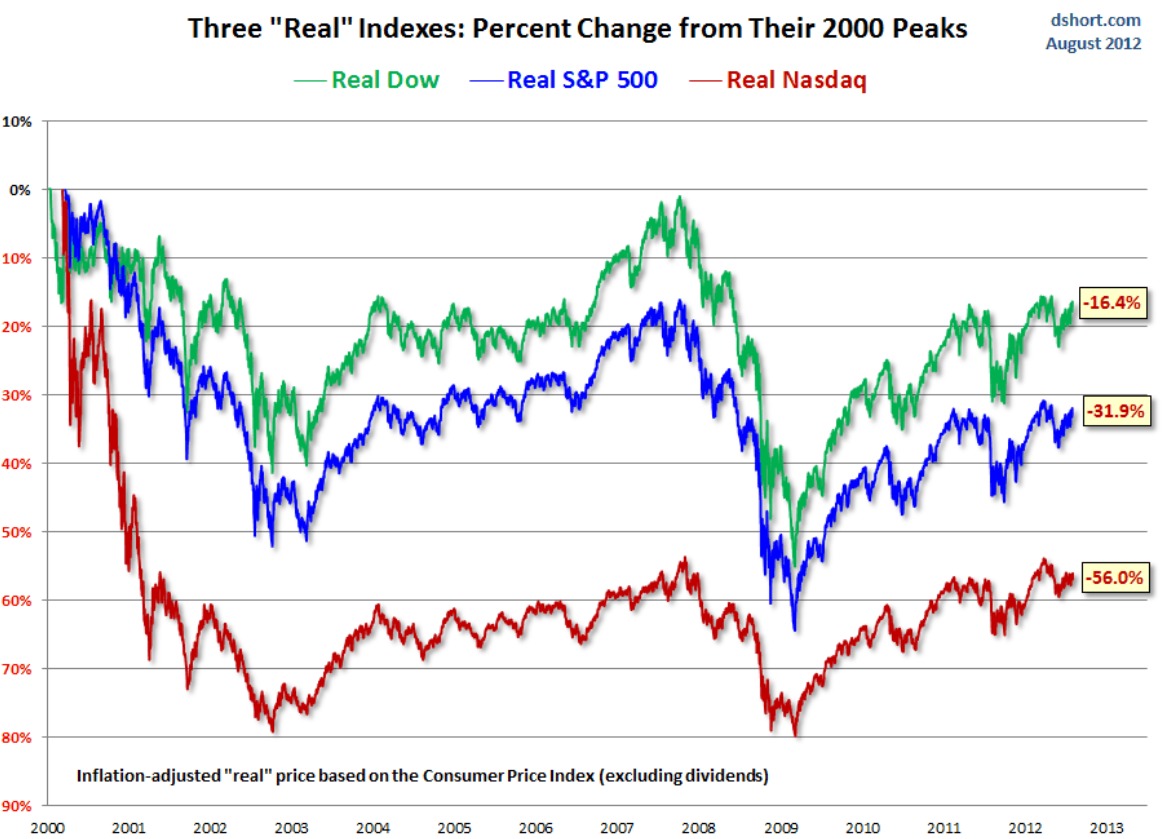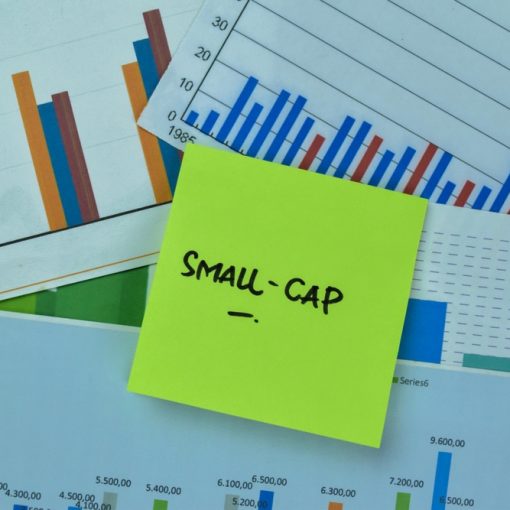by Michael Tarsala
Here’s a chart that just may churn your stomach if you’re a buy-and-hold investor.
The market always comes back if you wait long enough — or at least that’s the reasoning behind buy-and hold.
The theory is that you can’t time the market, so you shouldn’t try.
Yet here’s a look at the real return of the major U.S. stock indices since the 2000 market peak, as put together by Doug Short at AdvisorPerspectives.com:

Source: AdvisorPerspectives.com
The S&P is down only 8.9% since those high times, in absolute terms. Yet on a real basis, adjusted for inflation, it’s down 31.9%.
Here’s a table with the breakdown for each index:

What that means is that $1000 invested at the March 2000 peak is worth $853 as of the end of last week.
That’s something to consider when making a choice between active and passive investment strategies.
Read this for more background about the differences between the two approaches.
What I like is that active managers tend to take profits along the way. They don’t just buy and hold.
More importantly, they have the flexibility to move to cash or to less sensitive sectors when market volatility begins to rise and prices start to fall.
Want to find out more about active management?
Talk to us. We’re not pushy. We’ll give you straight-up facts about our actively managed investment models.



